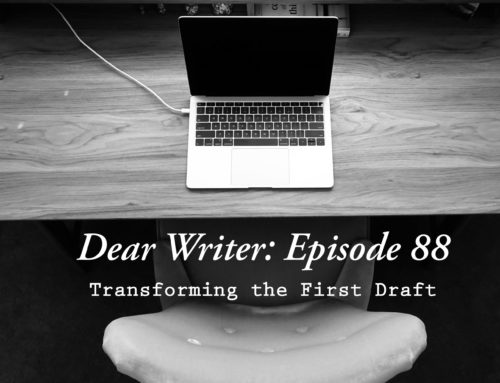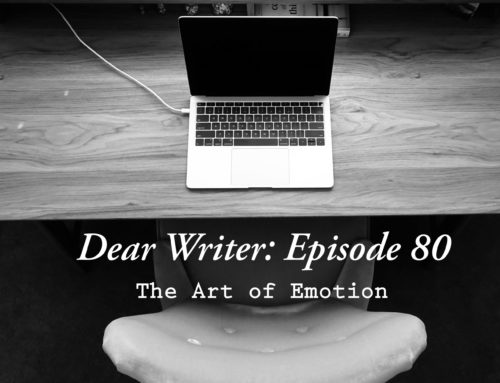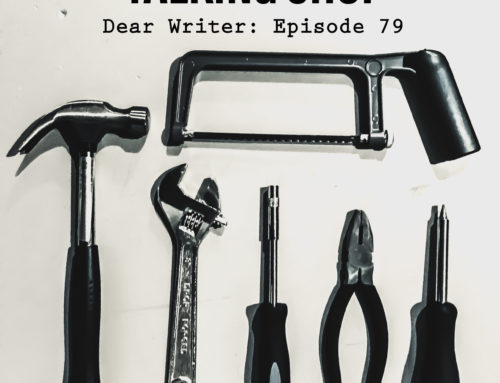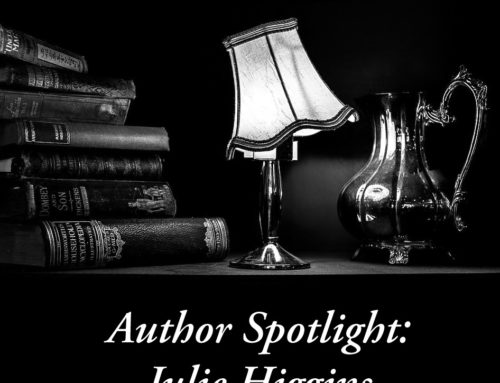Weaving in Backstory
On this craft episode of Dear Writer, we discussed how to weave backstory into your novel, and why it is important, especially when it comes to the craft of character and relating to your readers.

Episode Summary:
Main Discussion: Weaving in Backstory
In today’s episode, we’ll be talking about backstory and the importance of it in our novels. Let’s start with the question, what is backstory?
Sarah: Backstory is everything that happened to the characters in your novel before the story began. It’s their personal history, and could refer to something that happened a long time ago, a month ago, or yesterday.
Ashley: Backstory encompasses all of the significant events and moments that shaped the character into who they are at the start of your story. For example, maybe they are hesitant to let people get close to them due to previous heartbreak.
Why is backstory important for the author? Why is backstory so important in a novel?
Sarah: Without backstory the characters seem flat and two dimensional. No one is born from a hole in the ground, so characters that don’t have a backstory feel unrealistic. It also helps you as an author create stronger and more engaging writing, because unless you understand your characters and their motivations and reasons for doing what they do, you’re going to be just as confused as any reader who chances across your book. Characters without a strong backstory are often inconsistent, and can make writing feel like a real struggle.
Ashley: Backstory helps us get a good grasp on our character’s fears and motivations, which in turn allows us inject more depth into our characters. As to why it’s important for your novel, you know, Sarah and I love character. Backstory allows the author to develop realistic characters with more authentic actions, dialogue, and relationships. The more authentic and realistic your characters are, the more readers connect with them. It makes your story more dynamic and engaging.
What are the key elements an author should portray in a character’s backstory?
Sarah: The key elements are things the readers need to know in order to connect with the character and to sympathise with the decisions they are making. The more information the readers have about the character’s past, the more they are going to understand and feel for your characters, even if they make the wrong decisions. But obviously, you can’t give the character’s entire life story, because that detracts from the main plot. Though it’s helpful to know as much about your character, you have to give just enough to offer the illusion to the reader that they know this character deeply. I think relevant things surface when they’re related to a character’s decisions, and they definitely don’t need to be thrown in all at once, or at the beginning of the book. It is always a balancing act.
Ashley: First, I think it’s important to clarify that not all the backstory needs to go into the story but the author should have an in depth knowledge of the character’s backstory regardless. And there is an art to showing, not telling this. That said, the author should be able to answer a number of key questions about the character and their backstory. 1. What are the motivations of the characters (and why!)? This is where backstory should be carefully thought out. Their motivations often stem from events in their past. 2. What are they afraid of (and why!)? Again, their fears will come from their past. 3. What are their skills/abilities/traits and how did they get them? For example, did your character get their knowledge of the outdoors from going camping with their father as a kid?
What are some of our favourite techniques for injecting of backstory into our novels?
Sarah: They shouldn’t be used to often, but I do enjoy the occasional flashback! Dialogue is another favourite of mine, obviously there are lots of times when the character reveals something about themselves. But more specifically with dialogue I enjoy conversations between two characters about a third character who is often not present. Sort of in a gossipy kind of way, I guess, but not in such a negative light. I enjoy using this technique to reveal qualities about the third character which they’d never say themselves, or to reveal trauma the character has gone through. And lastly, internal monologue and thoughts, especially in first person. Like something will happen that will spark a memory. Or the character will draw comparisons between a current situation and something that happened in the past.
Ashley: Dialogue is probably my favourite. In particular, conversations between characters to reveal certain key events that happened. My other favourite is probably memory triggers. Where something happens that reminds the character of something in their past that causes them to have some sort of emotional reaction. I do occasionally use flashbacks but I don’t use them all the time as it can be overwhelming for the reader.
“The most important things to remember about backstory are that (a) everyone has a history and (b) most of it isn’t very interesting. Stick to the parts that are, and don’t get carried away with the rest. Life stories are best received in bars, and only then an hour or so before closing time, and if you are buying.” – Steven King, On Writing: A Memoir of the Craft.
Why is too much backstory a problem?
Sarah: Like the quote Ashley just read, too much backstory is an issue because a lot of it isn’t very interesting. When you think of ‘events’ that have happened in your life, you generally don’t count day to day occurrences unless they hold some special significance. And this should be true for your character as well. The audience doesn’t need to know things like the character’s favorite color, or what they ate for lunch a week ago. These things detract from your plot. The things you want to stick to are things that directly compare to the current situation your character is in (this is sometimes where you can have fun with smaller details), things that influence their choices (life events), and the things that shape their current world view.
Ashley: Backstory tends to slow the pace of a story. And putting in too much can bog the reader down. I had this issue recently. In one of my recent ancient Greece book chapters a lot of the feedback was that in the middle there was too much exposition and information dumping that ruined the flow and made the readers bored. So that’s something I will have to go back over and decide what can stay and what needs to go.
What are some tips to help authors get the balance between too much and too little backstory?
Sarah: I think sticking to the elements I named in the last question will go a long way towards finding the right balance. It’s the important things that matter: think about the stuff that matters most to you and why those things matter. Can you tie it back to some favorite memories? What are the events that shaped your beliefs? If you are able to tie these questions back to specific events and memories in your life, those are the things that should be revealed in backstory. Now do the same with your character.
Ashley: Try and balance the pacing. Since backstory (often but not always) slows the story down, you can use this to your advantage to give the reader a break after a particularly action packed sequence. Edit! After the first draft, you might find that you’ve packed your novel with backstory. Cut it back and really think about what parts are necessary and what parts aren’t.
What are some common mistakes authors make when trying to relay backstory?
Sarah: Definitely putting in too much, especially at the start of the story where you really need to be developing momentum and interest rather than revealing the character’s life story. In my opinion, the start of the story should almost do the opposite: Hold most of the backstory back until you have developed enough mystery and intrigue. Then, slowly let the key elements of the backstory drip in as the details become pertinent to the plot. And then there is the mistake of doing the opposite, which we discussed at the beginning of this episode—not having enough backstory! Readers are people, and people are always looking to make connections and to understand others. So give them the opportunity to do that, unless you want bored readers and flat characters.
Ashley: Info-dumping and trying to include too much backstory.





















Leave A Comment